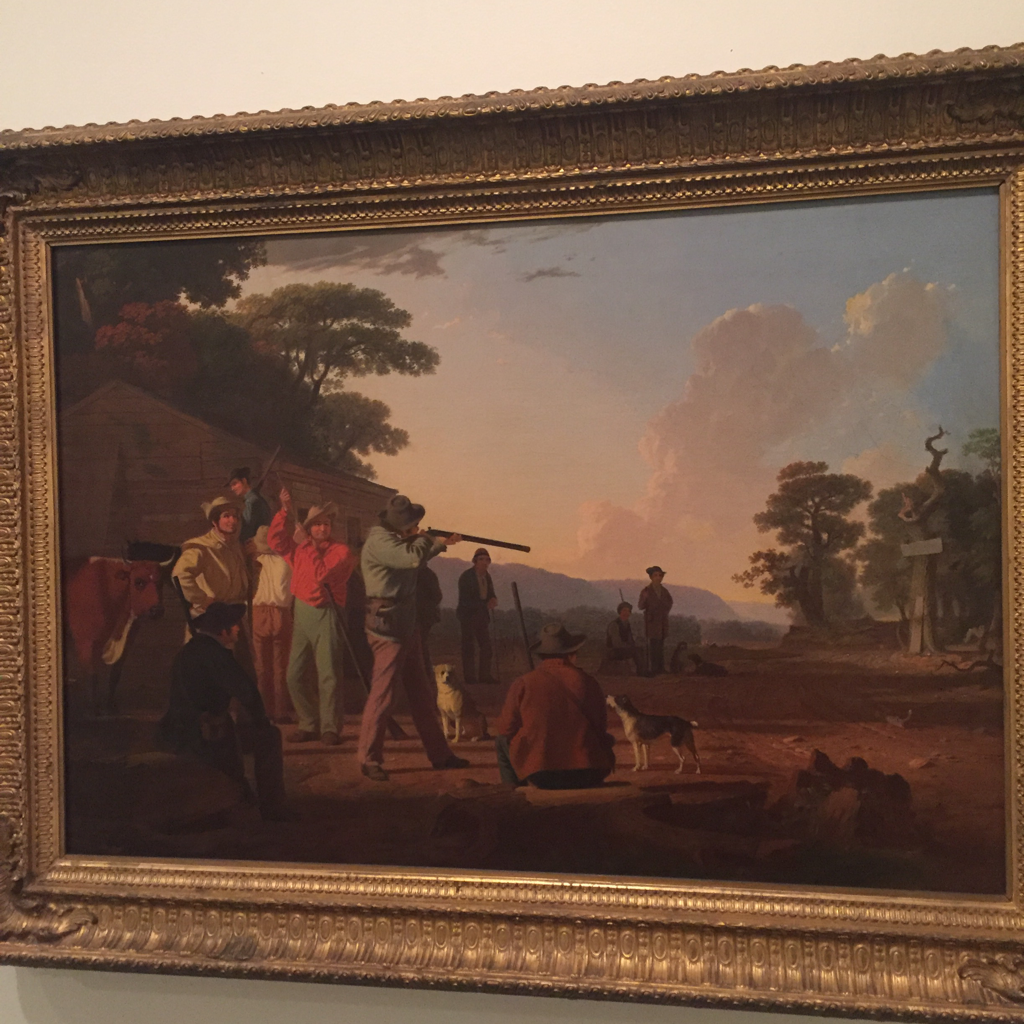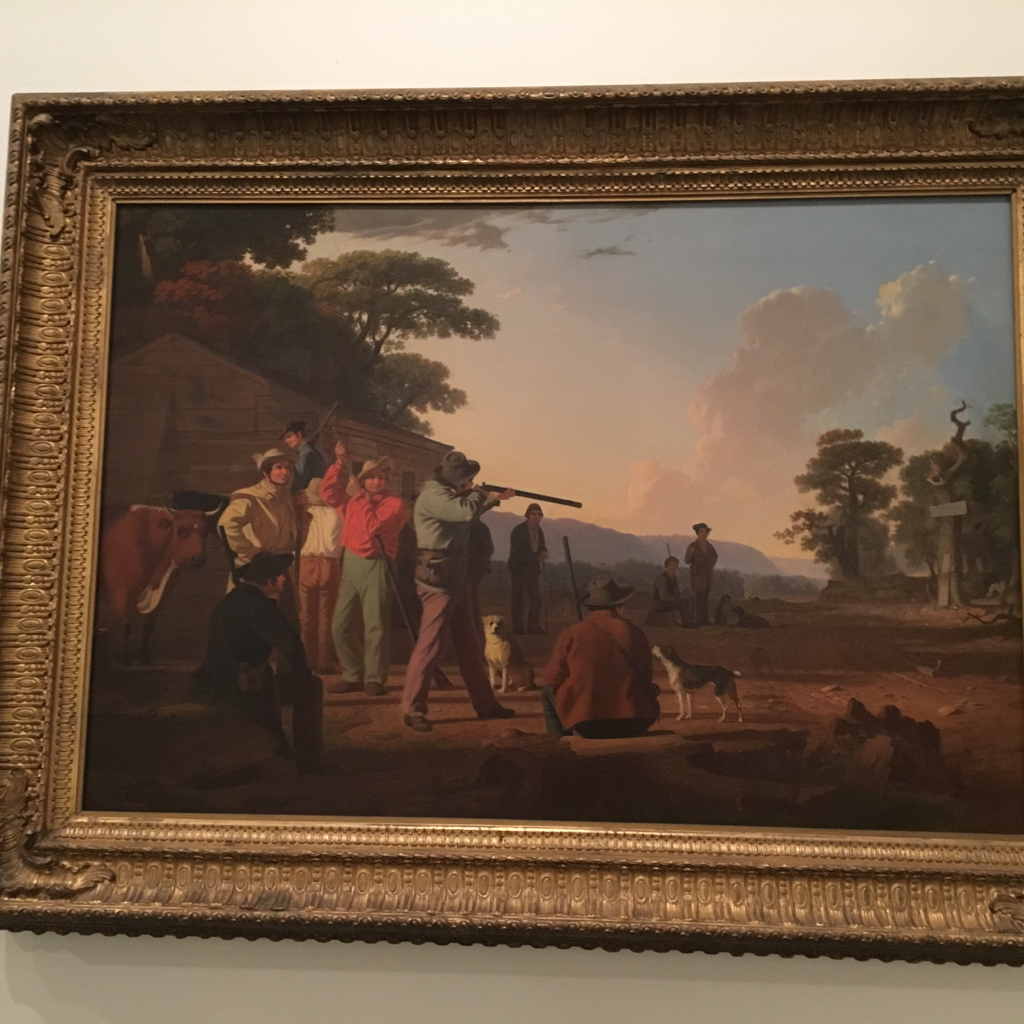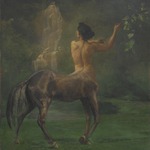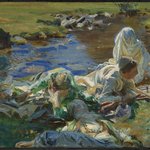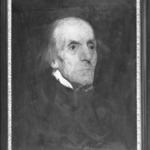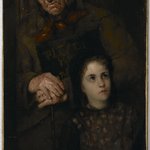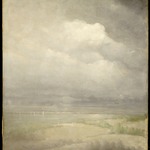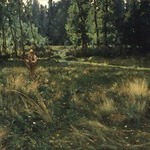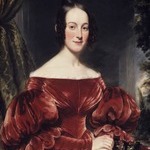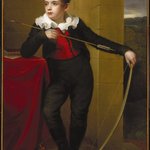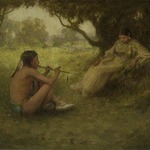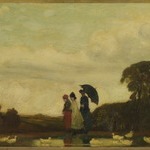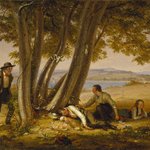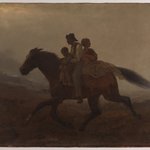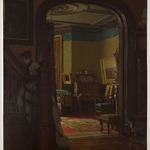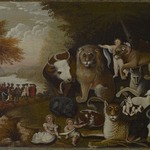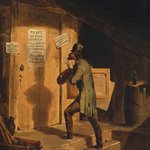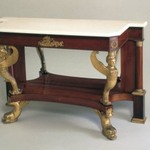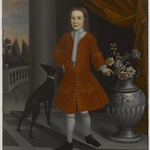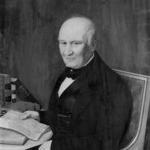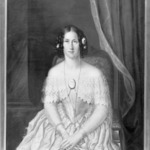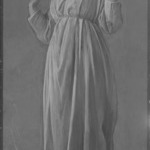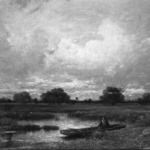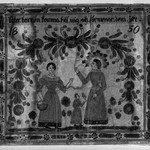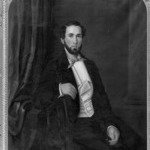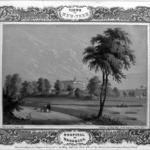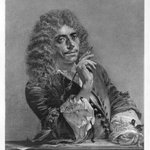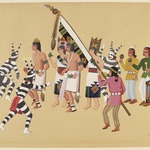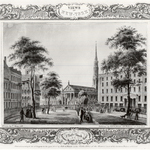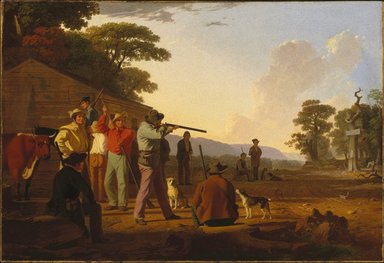
Shooting for the Beef
George Caleb Bingham
American Art
On View:
The glum-looking steer at far left watches as men compete in a shooting contest—a typical western pastime—to win him as a prize. The target is a nail on the board leaning against the dead tree. A sign above reads “To Boonsborough 14 miles.” This town, named for the renowned pioneer Daniel Boone, was in central Missouri’s Boone County.
The lively narrative of rough but amiable frontier types and the far-ranging view of the landscape create a vivid representation of Manifest Destiny. During this era, many Americans believed in divine approval of westward expansion and limitless opportunity for those with a pioneering, competitive spirit.
The lively narrative of rough but amiable frontier types and the far-ranging view of the landscape create a vivid representation of Manifest Destiny. During this era, many Americans believed in divine approval of westward expansion and limitless opportunity for those with a pioneering, competitive spirit.
MEDIUM
Oil on canvas
DATES
1850
DIMENSIONS
33 3/8 × 49 in. (84.8 × 124.5 cm)
frame: 45 1/2 × 61 × 5 in. (115.6 × 154.9 × 12.7 cm) (show scale)



SIGNATURE
Signed lower left: "G.C. Bingham / 1850."
COLLECTIONS
American Art
ACCESSION NUMBER
40.342
CREDIT LINE
Dick S. Ramsay Fund
EXHIBITIONS
MUSEUM LOCATION
This item is not on view
CAPTION
George Caleb Bingham (American, 1811–1879). Shooting for the Beef, 1850. Oil on canvas, 33 3/8 × 49 in. (84.8 × 124.5 cm). Brooklyn Museum, Dick S. Ramsay Fund, 40.342 (Photo: Brooklyn Museum, 40.342_SL1.jpg)
IMAGE
overall, 40.342_SL1.jpg. Brooklyn Museum photograph
"CUR" at the beginning of an image file name means that the image was created by a curatorial staff member. These study images may be digital point-and-shoot photographs, when we don\'t yet have high-quality studio photography, or they may be scans of older negatives, slides, or photographic prints, providing historical documentation of the object.
RIGHTS STATEMENT
No known copyright restrictions
This work may be in the public domain in the United States. Works created by United States and non-United States nationals published prior to 1923 are in the public domain, subject to the terms of any applicable treaty or agreement.
You may download and use Brooklyn Museum images of this work. Please include caption information from this page and credit the Brooklyn Museum. If you need a high resolution file, please fill out our online application form (charges apply).
The Museum does not warrant that the use of this work will not infringe on the rights of third parties, such as artists or artists' heirs holding the rights to the work. It is your responsibility to determine and satisfy copyright or other use restrictions before copying, transmitting, or making other use of protected items beyond that allowed by "fair use," as such term is understood under the United States Copyright Act.
The Brooklyn Museum makes no representations or warranties with respect to the application or terms of any international agreement governing copyright protection in the United States for works created by foreign nationals.
For further information about copyright, we recommend resources at the United States Library of Congress, Cornell University, Copyright and Cultural Institutions: Guidelines for U.S. Libraries, Archives, and Museums, and Copyright Watch.
For more information about the Museum's rights project, including how rights types are assigned, please see our blog posts on copyright.
If you have any information regarding this work and rights to it, please contact copyright@brooklynmuseum.org.
RECORD COMPLETENESS
Not every record you will find here is complete. More information is available for some works than for others, and some entries have been updated more recently. Records are frequently reviewed and revised, and we welcome any additional information you might have.


